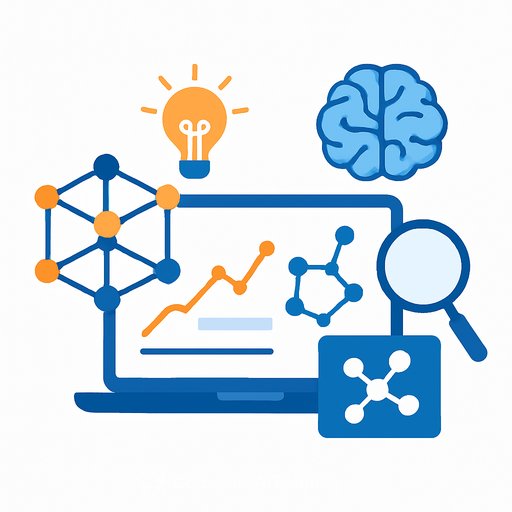MOF-ChemUnity: a unified knowledge graph for MOF research
Metal-organic frameworks are unusually adaptable materials with ultra-high surface areas - some reach ~7,000 m²/g, so a gram carries the internal area of a football field. Their structure enables gas separation, ultratrace sensing, catalysis, and targeted drug delivery. Their growing impact is clear: MOFs were the subject of the 2025 Nobel Prize in Chemistry.
But as publications multiply across more than 25 application domains, even expert teams and AI tools struggle to keep the literature straight. A new open-access system from U of T Engineering and the Vector Institute tackles that head-on: MOF-ChemUnity, a structured map of MOF knowledge published in the Journal of the American Chemical Society and selected for the issue cover.
What MOF-ChemUnity is
MOF-ChemUnity is a scalable knowledge graph that extracts and links information from MOF papers, crystal structure repositories, and computational databases. It currently stores about 0.5 million data points and connections for over 15,000 MOFs.
At its core is a multi-agent LLM workflow that resolves chemical names in the literature to the correct crystal structures. That lets synthesis procedures, properties, and applications be stored in a consistent, machine-readable format with relationships like "made from," "synthesized," and "used for." As the team puts it: "Scientific discovery begins with reading and synthesizing the literature… MOF-ChemUnity creates a unified foundation that both researchers and AI systems can build on."
Why this matters for your lab
Literature-first discovery is still the bottleneck. MOF-ChemUnity reduces that friction and improves the reliability of AI assistance by grounding responses in curated, linked records. In blind evaluations by MOF experts across institutions, a literature-informed assistant built on the graph was rated more accurate, interpretable, and trustworthy than baseline LLMs such as GPT-4o.
Practical ways to use it
- Compare synthesis routes, solvents, modulators, and temperatures for a target structure - with pointers back to the original sources.
- Trace provenance from publication to crystal structure to adsorption, selectivity, or catalytic performance.
- Search by application (CO₂ capture, catalysis, sensing, drug delivery) and shortlist candidates that meet constraints.
- Plug the graph into your LLM stack to cut hallucinations, add citations, and standardize terminology across papers.
- Plan experiments with evidence: identify gaps, avoid duplication, and prioritize conditions with higher odds of success.
How it works (quick view)
- Ingests literature, structure repositories, and computational materials datasets.
- Multi-agent LLMs disambiguate names and map text to the correct crystal structures.
- Builds triples linking each MOF to metal nodes, linkers, synthesis protocols, properties, and applications.
- Exposes a machine-readable graph for retrieval, analysis, and reasoning.
Data you can trust
The assistant grounded on MOF-ChemUnity draws from verified experimental and computational records. In expert blind tests, responses improved in factual accuracy and interpretability compared to standard LLM baselines. That's the point: fewer guesses, more citations, better decisions.
Open access and collaboration
The dataset and code are openly available on GitHub for researchers to use, audit, and extend. The project is led by Professor Mohamad Moosavi with graduate students Thomas Pruyn and Amro Aswad (ChemE). It is supported by the National Research Council of Canada's Materials for Clean Fuels Challenge Program, and by U of T's Acceleration Consortium and Data Science Institute.
If you want to read the journal venue behind this work, see the Journal of the American Chemical Society here: JACS.
Next steps for researchers
- Use the graph to frame hypotheses and select candidates that match your experimental constraints.
- Integrate retrieval from MOF-ChemUnity into your LLM workflow to reduce hallucinations and standardize outputs.
- Contribute new data or corrections to strengthen the graph for the community.
- Adapt the same approach to adjacent materials systems where literature fragmentation slows progress.
Building literature-informed AI assistants for your team? Explore practical, role-specific training to speed up adoption: AI courses by job.
Your membership also unlocks:






